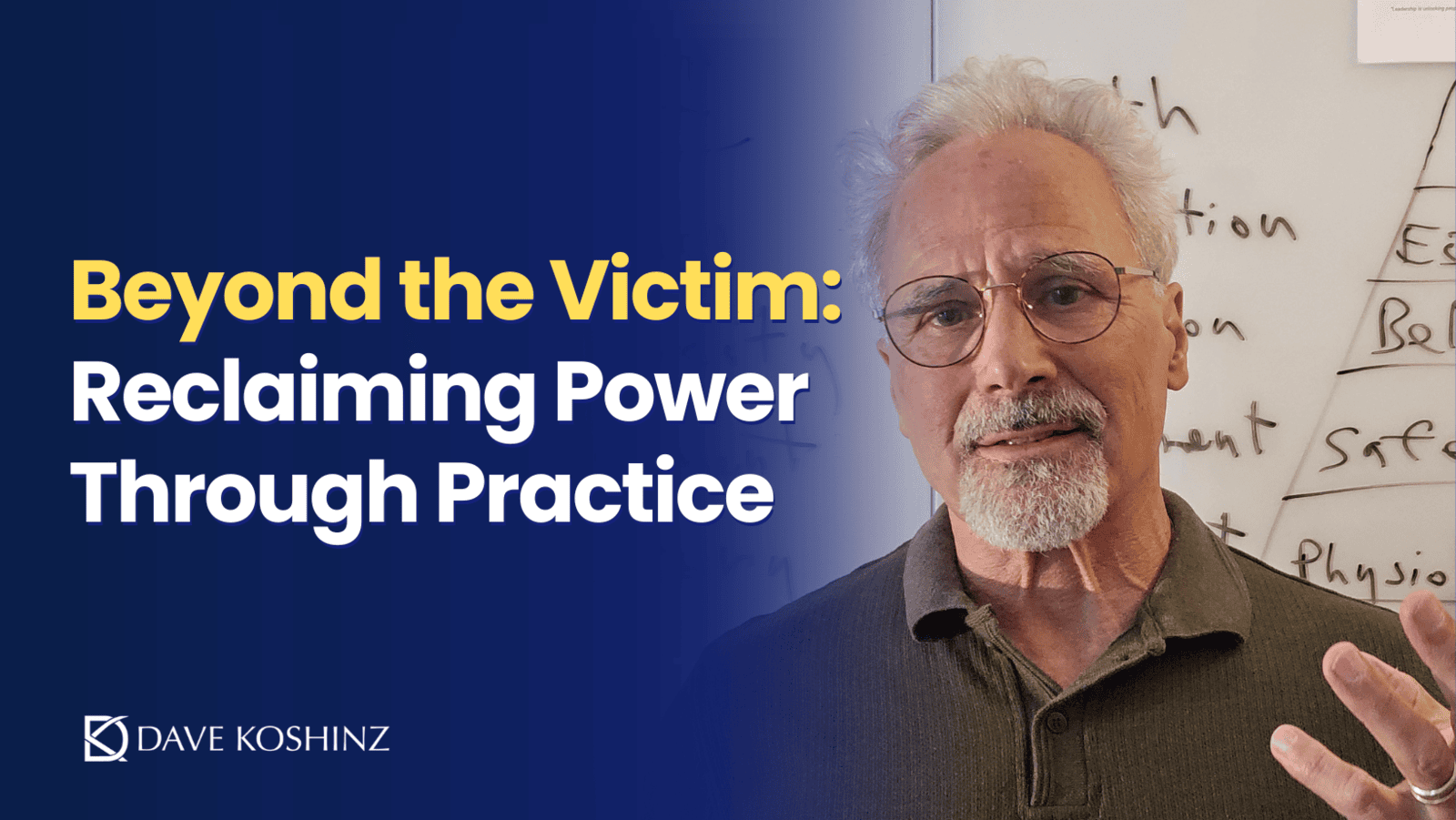
“Between stimulus and response there is a space. In that space is our power to choose our response. In our response lies our growth and our freedom.”— Viktor E. Frankl
The Victim Archetype: A Familiar Companion in Human History
The victim mindset is not a flaw. It’s a deeply human reflex—an ancient survival mechanism wired into our nervous systems. Across cultures and throughout history, stories of victims have helped us recognize injustice, seek safety, and establish moral codes. From mythological figures like Job in the Hebrew Bible to tragic heroes in Shakespearean drama, the victim archetype has helped societies process grief, recognize suffering, and call for compassion or change.
But when this archetype becomes a mindset—one we live inside unconsciously—it can limit our growth, relationships, and agency. What begins as a valid emotional signal can calcify into a worldview where we feel powerless, stuck, or resentful.
And yet—here’s the paradox—it’s normal. Even necessary at times. So what do we do with it?
Why the Victim Mindset Is So Tempting
Our brains are built for threat detection, not objective reality. According to Dr. Rick Hanson (2013), our nervous system is like Velcro for negative experiences and Teflon for positive ones—a phenomenon callednegativity bias. This bias evolved to help our ancestors survive: better to assume the worst and be wrong than ignore a threat and pay the ultimate price.
When something goes wrong, the victim stance helps us assign blame quickly and reduce ambiguity. Neuroscience confirms that uncertainty and powerlessness activate the amygdala, our fear center (Kross et al., 2011). The victim narrative simplifies chaos—it tells us, “You’re not the problem; the world is.” In doing so, it momentarily soothes our anxiety.
Psychologically, this mindset can also protect self-esteem. Attribution theory suggests that we often externalize blame to preserve our sense of self (Weiner, 1985). After all, it’s less painful to say, “They did this to me” than “I might have played a role.”
But here’s the catch: what protects us emotionally in the short term often stunts us in the long run.
Nothing Is Broken—But Something Needs Training
The victim mindset isn’t a disease. It’s a default. And like any default pattern—such as slouching or shallow breathing—it can be changed with awareness and consistent effort.
The path forward isn’t about shaming ourselves for being reactive, hurt, or overwhelmed. It’s about building apracticethat orients us toward agency, curiosity, and growth. Just as athletes train their bodies or musicians train their ears, we can train our minds away from helplessness.
Consider it mental fitness: not to ignore real harm or bypass pain, but to resist getting stuck in the story of powerlessness.
The Payoffs of Letting Go of Victimhood
When we learn to witness our inner victim without being ruled by it, something profound happens. Here are a few of the rewards:
1. Greater Emotional Resilience
Practicing non-victimhood builds our capacity to regulate emotion. By shifting from “Why is this happening to me?” to “What can I do next?”, we activate the prefrontal cortex—the part of the brain responsible for planning, empathy, and rational thinking (Arnsten, 2009).
2. Deeper Relationships
Victimhood often isolates. It can create a dynamic where others feel blamed or helpless themselves. Choosing agency fosters collaboration and accountability—key ingredients in trust and intimacy.
3. Clearer Decision-Making
When we move out of a reactive stance, we regain clarity. Decisions are made from intention rather than fear or reactivity. This reduces impulsive behavior and helps us pursue long-term goals.
4. Empowered Identity
Perhaps the most powerful shift is internal: we no longer define ourselves by what happenstous, but by how werespond. This moves us from being shaped by life to shaping it.
Leading Others Out of the Victim Mindset
As a leader, you will encounter teammates or direct reports who fall into the victim mindset—especially during high-stress periods, transitions, or organizational changes. Here’s how to lead with skill, empathy, and impact:
1. Normalize Without Condoning
Let your team know that it’snormalto feel stuck, frustrated, or even powerless at times. Acknowledge their emotions without reinforcing helplessness. Say things like:
“It makes sense to feel overwhelmed right now. I’ve felt that too. And we’re not stuck—let’s look at where we do have influence.”
This builds psychological safety while gently shifting the frame toward possibility.
2. Ask Agency-Oriented Questions
Rather than debating the facts of the situation, ask questions that reawaken personal responsibility:
- “What part of this is in your control?”
- “What’s one thing you could do differently next time?”
- “If you were coaching someone else in this situation, what would you advise them to try?”
These questions restore dignity and re-activate executive function.
3. Watch for Secondary Gains
Sometimes staying in the victim mindset serves a hidden need—like avoiding conflict, responsibility, or emotional vulnerability. With compassion, help teammates see if the story is protecting them from something they don’t yet feel ready to face.
4. Model the Mindset Shift
Team members watch howyourespond to difficulty. If you habitually reframe challenges, own mistakes, and stay solutions-focused, others will follow. You don’t have to be perfect—just visible in your practice.
5. Create a Culture of Constructive Accountability
Reward efforts to take ownership. Celebrate when someone speaks up with solutions or reflects on how they contributed to a breakdown. When accountability becomes a cultural norm—not a punishment—victimhood becomes less attractive.
Practicing Power Over Time
Whether in yourself or your team, shifting out of a victim mindset is not a one-and-done event. It’s a discipline of noticing, re-centering, and choosing again.
You’re not erasing the inner victim—you’re learning to live with it compassionately, without letting it steer the ship.
The reward? Greater agency, healthier teams, more resilient leadership—and the quiet confidence that comes from knowing you have the power to shape what happens next.
Reflection Prompt:
💭 As a leader, where might you be accidentally reinforcing victim mindsets in your team? And what’s one shift you could make this week—in how you speak, coach, or respond—that moves people toward agency and strength?

